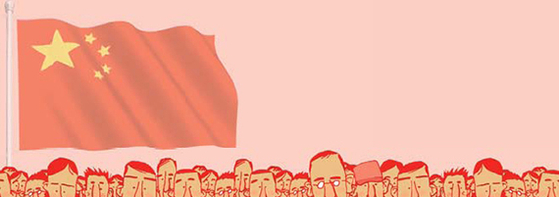Your enemy is public sentiment

The author is a Beijing correspondent of the JoongAng Ilbo.
The G7 leaders defined China as a “challenge” the allies need to resolve, but China doesn’t seem to consider the definition as threatening as it sounds from outside.
G7 agreed on the B3W (Build Back Better World) initiative to fulfill the infrastructure demands of developing countries. Western media reported that it is aimed at countering China’s One Belt, One Road initiative, but Chinese media undervalued the B3W as it’s unclear when the plan will begin and how much funding will actually be allocated. As G7 nations have urgent fiscal deficit issues, it is questionable whether they can afford the $40 trillion of financial assistance, China thinks.
Without China’s cooperation, there cannot be any action plan for the G7 countries to reinvestigate the origin of the coronavirus. In the meeting, some European leaders reportedly raised concerns that China’s cooperation on climate change and trade could become complicated. The anti-China trend is getting stronger, but China can rely on the fact that the size of its trade with America, Europe and Japan actually grew.
In contrast, two trends are becoming more obvious. The first is the unification front. Rather than being discouraged by the West’s check on Taiwan and Hong Kong, China is actually using it as a chance for offensives. A day after U.S. President Joe Biden and NATO issued a statement denouncing China’s ambition and arbitrary action, 28 Chinese fighters, including four nuclear bombers entered Taiwan’s air defense identification zone. In Hong Kong, anti-China media were charged for “colluding with foreign powers and jeopardizing national security.” As the chief editor of Apple Daily was arrested and its assets were frozen, the newspaper is not likely to be published.
Meanwhile, China is focusing on addressing the domestic imbalance issue. It wants to focus on resolving the growing income disparity from rapid economic development.
The goal of China’s opening and reform in the 1980s was mutual prosperity. Just like China had set up special economic zones in Shanghai and Shenzhen 41 years ago, it has started to build a model district for mutual prosperity in Zhejiang Province.
China wants to directly confront Western pressure with the justification of non-intervention and respect for international order. The problem is that China gives little thought to why antagonism against it is growing. A poll showed that anti-Chinese sentiment was greater than anti-Japanese sentiment for the first time since the Thaad dispute. Anti-Chinese sentiment in the U.S. is also at the highest point ever.
At this point, China’s enemy may not be America, but public sentiment.










with the Korea JoongAng Daily
To write comments, please log in to one of the accounts.
Standards Board Policy (0/250자)